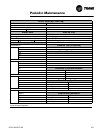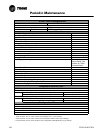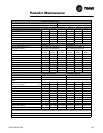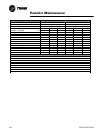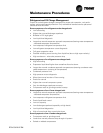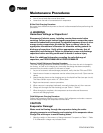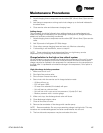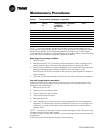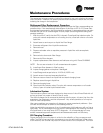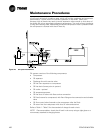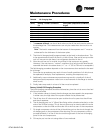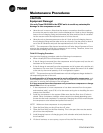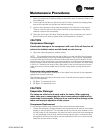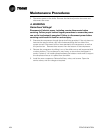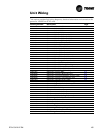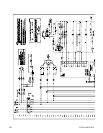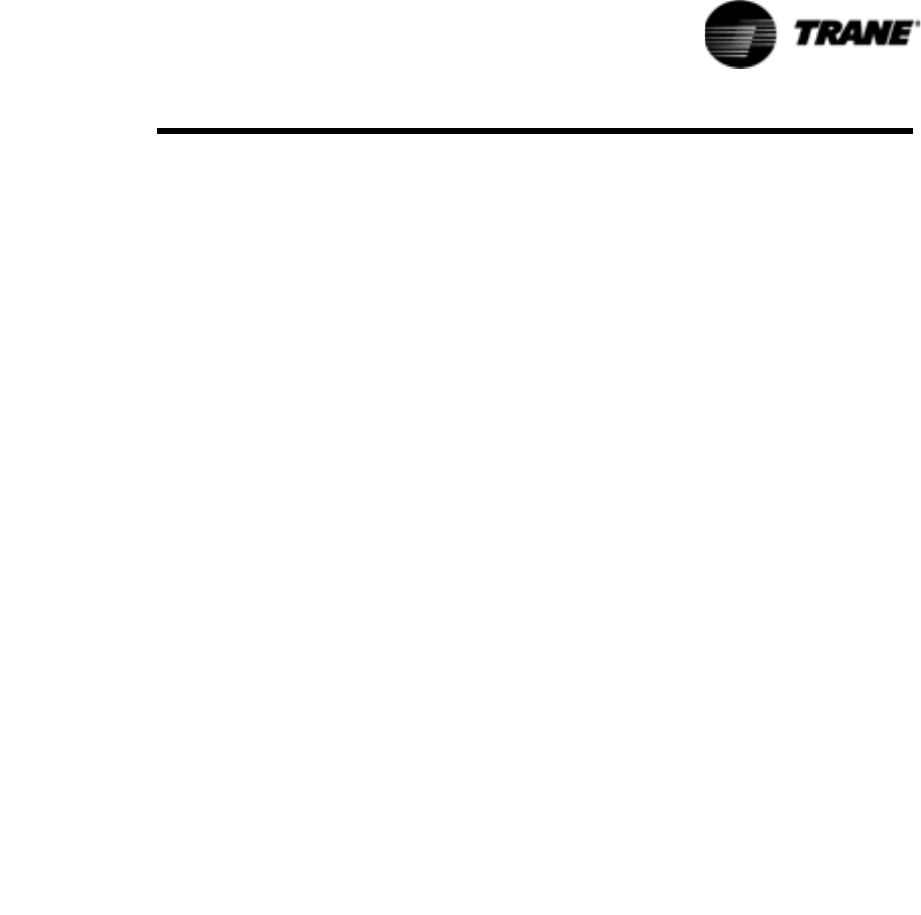
RTAC-SVX01F-EN 159
Maintenance Procedures
The evaporator is large enough to hold all the charge for any unit to below the center-
line of the shell. Therefore, no special precautions are required to restart the unit after
isolating the charge in the evaporator.
Refrigerant Filter Replacement Procedure
A dirty filter is indicated by a temperature gradient across the filter, corresponding to a
pressure drop. If the temperature downstream of the filter is 8°F (4.4°C) lower than
the upstream temperature, the filter should be replaced. A temperature drop can also
indicate that the unit is undercharged. Ensure proper subcooling before taking tem
-
perature readings.
1. With the unit off, verify that the EXV is closed. Close liquid line isolation valve. On
units with remote evaporators or oil cooling circuits, close ball valve on oil cooler
liquid line.
2. Attach hose to service port on liquid line filter flange.
3. Evacuate refrigerant from liquid line and store.
4. Remove hose.
5. Depress schrader valve to equalize pressure in liquid line with atmospheric
pressure.
6. Remove bolts that retain filter flange.
7. Remove old filter element.
8. Inspect replacement filter element and lubricate o-ring with Trane OIL00048.
NOTE: Do not use mineral oil. It will contaminate the system.
9. Install new filter element in filter housing.
10. Inspect flange gasket and replace if damaged.
11. Install flange and torque bolts to 14-16 lb-ft (19-22 n-m).
12. Attach vacuum hose and evacuate liquid line.
13. Remove vacuum hose from liquid line and attach charging hose.
14. Replace stored charge in liquid line.
15. Remove charging hose.
16. Open liquid line isolation valve. On units with remote evaporators or oil cooler
circuits, open oil cooler liquid line ball valve.
Lubrication System
The lubrication system has been designed to keep most of the oil lines filled with oil
as long as there is a proper oil level in the oil sump.
The total oil charge can be removed by draining the oil system, oil return line from the
evaporator, the evaporator, and the compressor. Very small quantities of oil may be
found in other components.
Like many machines, an excessive oil charge can cause operational problems. Spe-
cial care should always be taken to avoid adding extra oil.
Units that exhibit the symptoms of an oil overcharge at high loads may still run fine at
light loads. An oil overcharged unit may result in an evaporator limit warning or even a
low liquid level or low evap temp (LRTC) diagnostic. An oil overcharged unit may
exhibit increased approach temperatures and decreased overall unit efficiency.
Oil Charging Procedure
Proper charging of the oil system is critical to the reliability of the compressor and
chiller. Too little oil can cause the compressor to run hot and inefficient. When taken
to an extreme, low oil level may result in instant failure of the compressor. Too much



